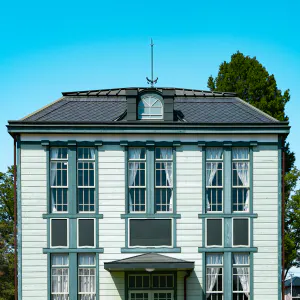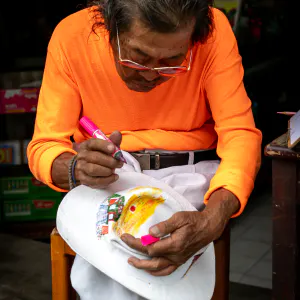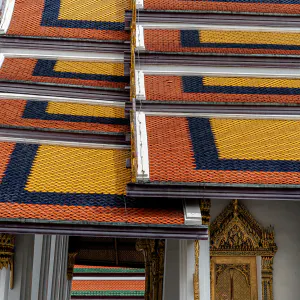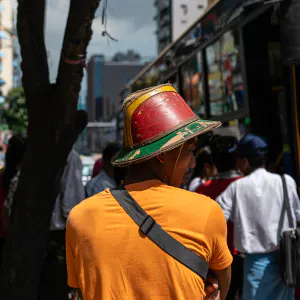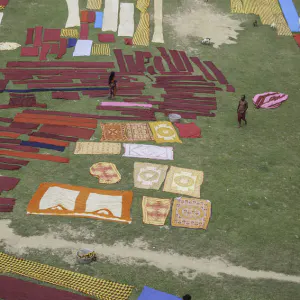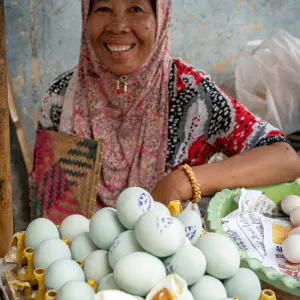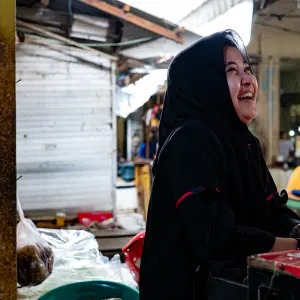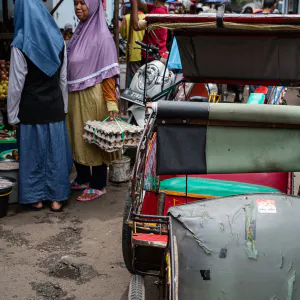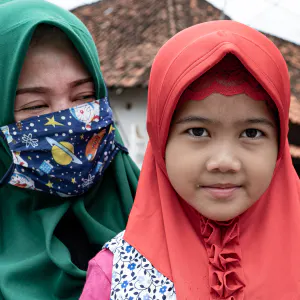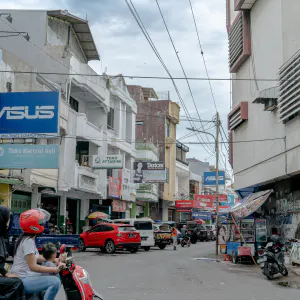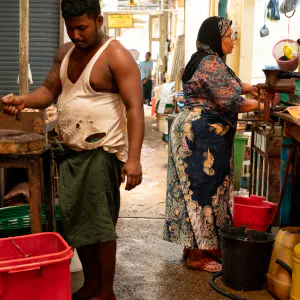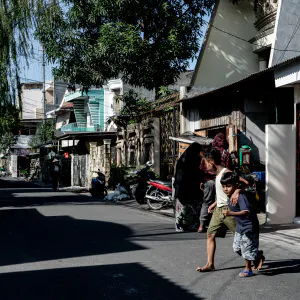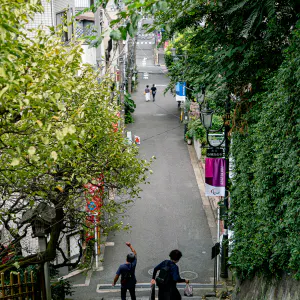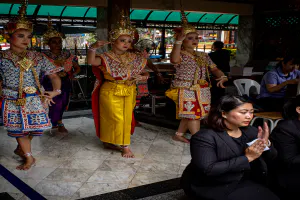The woman walked by, wearing a bright hijab to match her outfit

Muslim women are supposed to cover their hair as a matter of etiquette or religious taste. When they go out, they cover their hair or their whole face with hijab, chador, burqa, or abaya. Even here in Indonesia, where Muslims make up the majority of the population, most of the women I saw in town were wearing hijabs or chadors to cover their hair.
This kind of Islamic dress code is not actually mentioned in the holy book, the Quran. There is no specific mention of covering one's hair or face. It does say, "Be modest, lower your eyes, protect your private parts, and do not show your other beautiful parts to others. Cover your breasts."
This is just a vague statement. Depending on the interpretation of this phrase, it could mean that the face must be covered or the hair must be hidden. If you can hide your face, then you should hide your face, and if you can hide your hair, then you should hide your hair. Even in the time of Prophet Muhammed, women's hair was considered beautiful.
The woman I saw at the Kanoman market in Cirebon was also wearing a hijab to cover her hair. The woman's hijab was a bright-golden yellow that matched the beige clothes she was wearing. Most people use black hijabs and chadors, but there are some who coordinate them beautifully like this woman. But I wondered if dressing up too beautifully would violate the Quranic injunction, "Do not show your beauty to others."
| Jan 2021 INDONESIA PEOPLE | |
| CIREBON HIJAB MARKET VIVIDNESS WOMAN |
PHOTO DATA
No
11789
Shooting Date
Jan 2020
Posted On
January 17, 2021
Modified On
August 29, 2023
Place
Cirebon, Indonesia
Genre
Street Photography
Camera
SONY ALPHA 7R II
Lens
ZEISS BATIS 2/40 CF

